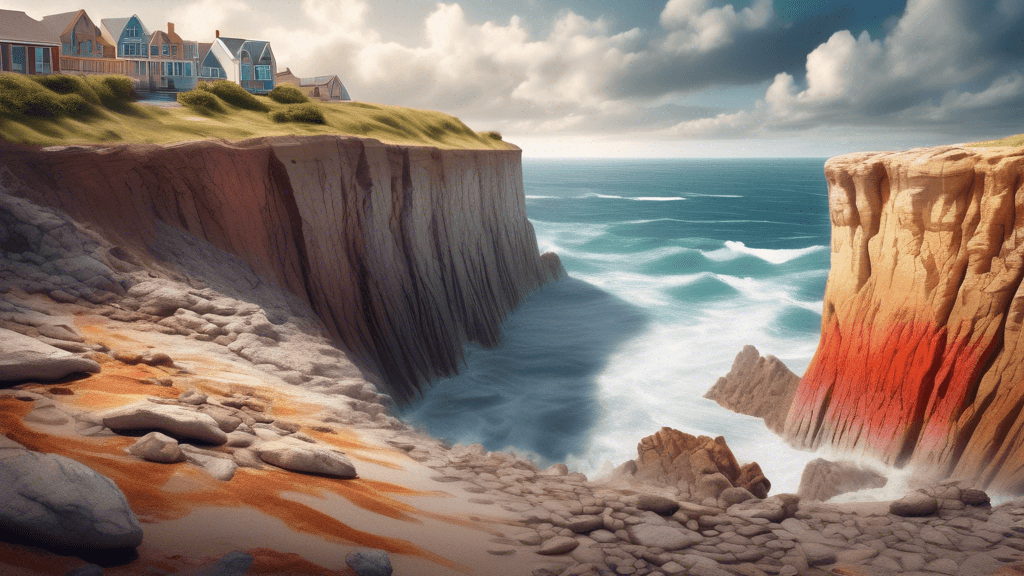
Capturing Time: The Impact of Erosion Through Geological Photography
Share
The Art and Science of Capturing Geological Time Through Photography
When we think about the impacts of erosion, we often perceive them as gradual, almost imperceptible changes. Yet, when captured through the lens of geological photography, these transformations reveal a dramatic narrative of time and nature at work. But why should we, as viewers, pay attention to these images? What do geological photographs tell us about our planet and our environmental responsibilities?
The Role of Geological Photography in Understanding Erosion
Geological photography is not just an artistic endeavor; it is a crucial scientific tool. By documenting the incremental changes in landscapes, photographers provide valuable data that can be used to understand how natural processes shape our world. These images also serve as a visual archive, tracking changes over time that might otherwise go unnoticed or unrecorded.
Visualizing the Invisible: How Photographers Capture Erosion
Have you ever wondered how photographers manage to effectively capture the slow, yet powerful effects of erosion? The answer lies in a combination of patience, precision, and the use of specific techniques:
- Time-lapse photography: This technique involves capturing a sequence of images at the same location over a period, which are then compiled into a video. This shows changes that are too slow to be seen by the naked eye.
- Long exposure: Using a slow shutter speed allows photographers to depict the movement of eroding elements like water or wind, giving a fluid, dynamic quality to their images.
- Drones and aerial photography: These methods provide a bird’s-eye view of landscapes, making it easier to grasp the scale of geological processes.
The Environmental Message Behind the Images
While the beauty of these photographs can be awe-inspiring, they also carry an urgent environmental message. As noted by acclaimed environmental photographer James Balog, Each image is a moment of time held against the tide of ecological change. These photos act as a powerful tool for environmental advocacy, revealing the profound and rapid changes happening to landscapes around the world due to natural and human-induced causes.
Consider the impacts of global warming on glacial erosion—an issue beautifully captured but alarmingly evident in geological photography:
- Glaciers are retreating at unprecedented rates, a phenomenon documented repetitively through photography.
- Coastal erosion intensified by rising sea levels is another critical issue showcased through aerial and ground photography.
The Emotional Impact of Geological Photography on Society
There's an emotional weight to viewing these slow yet relentless changes in our environment. By confronting viewers with the visual evidence of erosion, photographers compel us to acknowledge and respond to the ongoing changes that are shaping our world. This transformative power of visual evidence can stir public opinion and fuel engagement with conservation efforts.
Case Studies: A Picture of Change
Several notable projects have made significant impacts, not just within scientific communities, but also in public awareness and policy making. Projects such as the Extreme Ice Survey by James Balog have utilized time-lapse images to show glacial retreat over time. Another example is the work of Edward Burtynsky, whose photographs of water erosion have highlighted the vulnerability and transformation of landscapes at large scales.
Joining the Cause Through the Lens
So, how can aspiring photographers contribute to this powerful genre of environmental documentation? - Educating oneself about geological processes and sustainable photography practices is the first step. - Participating in workshops and expeditions that focus on environmental and geological photography. - Sharing images with local communities and policymakers can amplify the reach and impact of your work.
Are you ready to capture the slow drama of erosion and contribute to environmental conservation? Your photographs might just help tip the balance, promoting a greater public understanding and appreciation of our changing world.
Your lens can be a voice for the silent processes that shape our planet. It’s time to start capturing.





